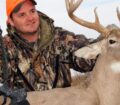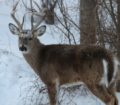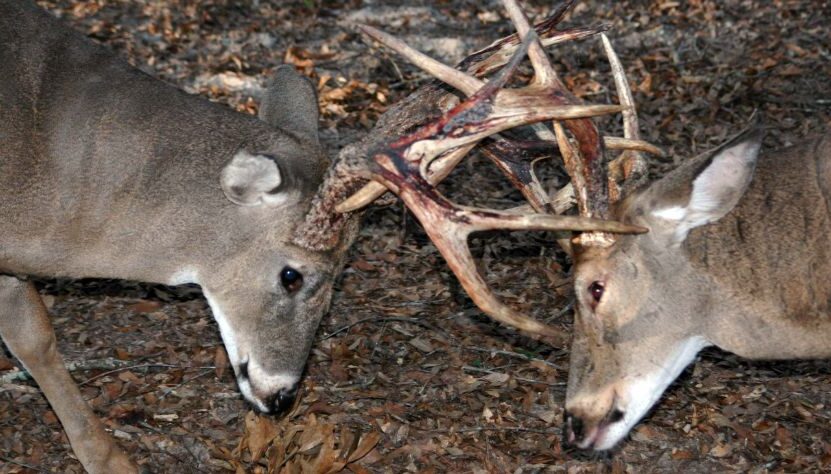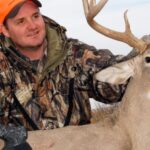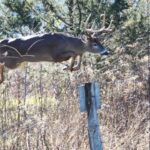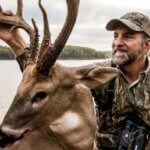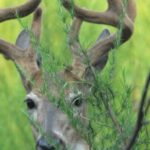Editor’s Note: Chris Kirby, owner of Quaker Boy Inc., bought his family’s business that was started in 1974 by his dad Dick Kirby, one of the legends in the calling industry. Dick Kirby was a very-versatile game caller, and Chris has followed in his footsteps, winning all the major turkey-calling championships after his dad won the World Champion of Champions, the World’s Goose Calling Championship, the World’s Moose Calling Championship, and others. Many outdoorsmen believe Chris Kirby was born with a turkey call and a deer call in his mouth because he can’t remember when he wasn’t calling critters. I’ve asked Kirby to tell us what he says to deer from the beginning of bow season until the end of rifle season to give you ideas for next year’s deer season. One of the best ways to learn a new technique or try a new product is to use it after deer season. If you’ve never attempted to call deer, leave your bow or gun at home, take some deer calls into the woods, and see what happens. Chris Kirby believes that if you’re a deer hunter, you’re a deer hunter all year.
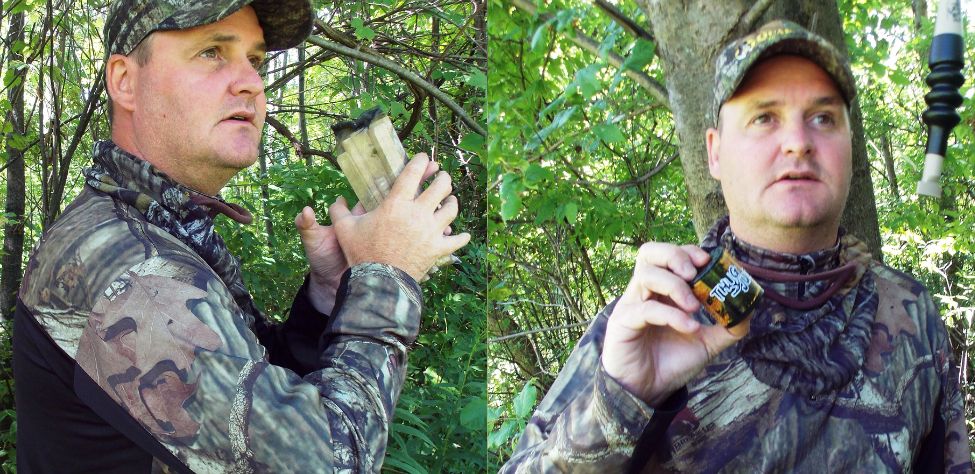
John E. Phillips: How do you call bucks during the peak of the rut?
Chris Kirby: The peak of the rut is when I do a lot of calling. I mix up my calls more in the peak of the rut than at any other time of the year. I’ll give tending grunts, growling grunts, and bleats because the bucks will be moving the most, covering ground during daylight hours, trying to find estrous does. I know bucks may be coming through the area I’m hunting, but often, possibly leaving that region very quickly. I’ll give the deer calls about every 15 minutes because the deer can come in and out of an area where he can hear my calls during that 15-minute time period. The buck will often be out of sight, and you can’t see him. Sometimes, I’ll start calling with my grunt call or bleat call every 10 minutes since I don’t want to miss that window of opportunity of a buck coming into the area where he can hear my deer calls and getting out of hearing before he hears me call again.
Phillips: When is deer calling the most effective, and when is it the least effective during the peak of the rut?
Kirby: Bucks are least likely to come to a deer call in that dreaded lockdown period when the buck has found an estrous doe and stays with her in thick cover during daylight and dark. Another time the deer won’t come to a call is when he’s trailing an estrous doe or he can’t hear the call. If a buck has just been in a fight with another buck and hears what he believes to be a buck grunt, he’ll probably go the other way. However, although grunt calls don’t always call in a buck, you have nothing to lose by trying a grunt call.
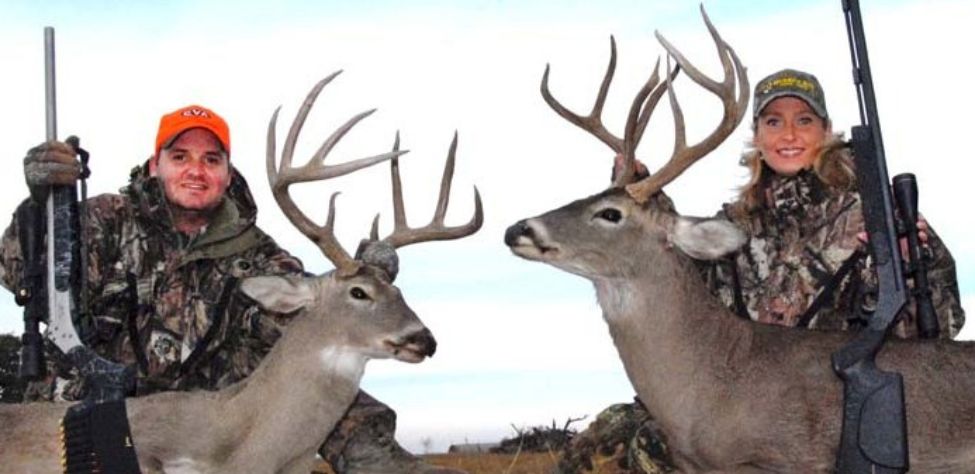
At the peak of the rut, when most of the does are in estrus, and most of the bucks are locked down in thick cover with does, rarely, if ever, will you be able to call a buck. The deer aren’t like turkeys in that when you’re turkey hunting, many times when a gobbler is with his hens, you can start calling to the hens, the gobbler will follow the hens, and you can harvest the gobbler. When a doe’s in estrus, and she’s got a buck standing right beside her – just waiting for her to be ready to breed, she isn’t going to come in, and neither is the buck. So, that’s when deer calls are the least effective.
However, deer calls seem most effective in that gap between the pre-rut and the rut. During that transition time (just before the rut begins until the peak of the rut starts), I find deer calling to be the most effective. Having said that, this doesn’t mean deer calling can’t be effectual at other times during deer season, from early bow season to the end of gun season. But between the pre-rut and the rut, it seems the best time to use deer calls to call in bucks.
Looking for more content? Check out our YouTube channel and watch “Avoid Overhunting a Spot – Bob Sheppard” by John E. Phillips.

How to Hunt and Take Big Buck Deer on Small Properties
In this book, you’ll hear from 14 hunters who either have gained permission or leased properties as small as six acres to as much as 250 acres, and how they consistently take older-age-class bucks off these little lands.
VERSIONS: AUDIBLE, KINDLE & PRINT

Jim Crumley’s Secrets of Bowhunting Deer
Using a black magic marker and a gray work jumpsuit, Jim Crumley of Buchanan, Virginia, drastically changed the nature and purpose of hunting camouflage when he created the first sportsman’s camouflage – Trebark. Crumley’s love of bowhunting and his desire to be more invisible changed hunting clothing forever.
In this hunting guide, he shares the wisdom that he’s learned throughout his lifetime about how to be a hunter, how to find a deer lease, how to scout for deer, and more.
Special features include how to:
- Have a magic 60 acres to hunt
- Decide the best equipment to use
- Find deer year-round
- Locate land to hunt
- Know the best place to put your tree stand
- Get bucks within bow range
VERSIONS: AUDIBLE, KINDLE & PRINT

How to Hunt Deer Like a Pro
How do you know if the land you hunt has a trophy deer on it? Wildlife manager Bob Zaiglin, of Uvalde, Texas and Jim Crumley, the father of modern-day hunting camouflage, tells you how to find out. GPS can make finding and taking that trophy buck easier. This hunting guide will teach you how to hunt big bucks where no one else can find them, how to call deer, and how to become versatile as a deer hunter, so that if one deer tactic doesn’t work, another one will.
In the chapter, “How to find Bucks at Scrape,” Dr. Keith Causey, retired professor of Wildlife Science at Auburn University, describes the best way to hunt a scrape.
Brad Harrison of Neosho, Missouri, is a nationally-known videographer, professional deer hunter and master at calling deer. Another master is Will Primos of Primos Game Calls. These two experts will tell the best deer calls and when to use them in this book.
And for over 20 years, Bo Pitman, lodge manager of White Oak Plantation, has been studying deer movement patterns. He explains what types of conditions are best for predicting deer movement.
VERSIONS: AUDIBLE, KINDLE & PRINT

Deer hunting and deer hunters are drastically changing each year. To learn new techniques for hunting deer and have more places to hunt, I’ve interviewed some of the best deer hunters in the nation and share their tactics in How to Hunt Deer Like a Pro: Volume II.
In Chapter 10, Jacob Lamar tells you his tactics for consistently taking older-age-class bucks on public lands in several states. Chapter 11, Bob Walker explains how to find places on public lands where you can hunt that 99 percent of the other hunters never have considered hunting. The Bonus Chapter with David Ramey tells you how, where, when and with what equipment to take big Kansas bucks on public lands by hunting in 100-degree weather when others won’t hunt.
Chapter 13, Mark Drury, his family and his guests take mature bucks every season by having more small places to hunt rather than one large property. Drury explains the strategy of having satellite farms to hunt that only may be 50-150 acres each or less. Chapter 15, Pat Reeve, who hunts far-northern states and Canada, says, “I don’t like hunting for mature bucks until the weather is 20 degrees or less.” Chapter 4, Dr. Larry Marchinton says that funnels are the most-reliable stand sites to hunt for big bucks and tells why.
VERSIONS: AUDIBLE & PRINT
Tomorrow: Call Deer in the Post-Rut

